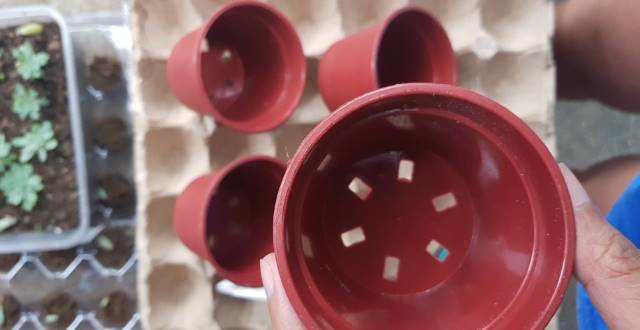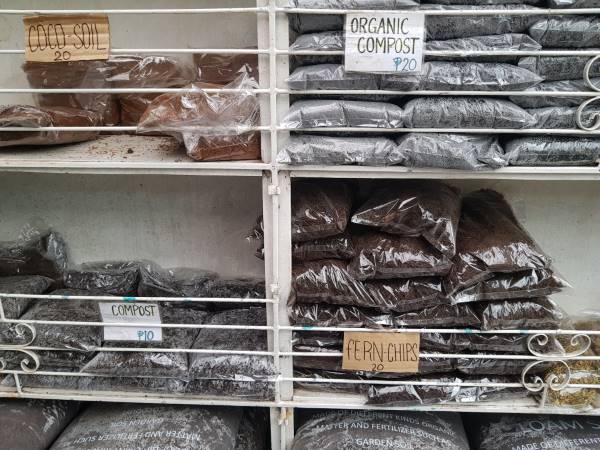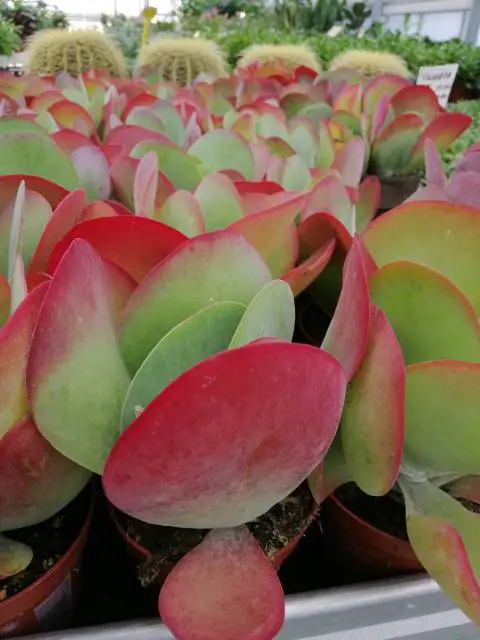Kalanchoe is a popular and low-maintenance succulent that can thrive indoors and outdoors. However, over time, your kalanchoe plant may outgrow its container and need repotting. Repotting a kalanchoe is necessary to give the roots more space to grow and prevent them from becoming root-bound. In this article, we will provide in-depth instructions on how to repot your kalanchoe and answer some frequently asked questions about kalanchoe repotting.
What are the signs that a kalanchoe plant needs to be repotted?
There are several signs that a kalanchoe plant needs to be repotted. Here are some of them:
- Roots growing out of the drainage holes: If you notice roots growing out of the drainage holes at the bottom of the pot, it’s a sign that the plant has outgrown its current container and needs more space.
- Watering more frequently: If you find yourself watering your kalanchoe plant more frequently than usual, it could be a sign that the plant is outgrowing its pot and needs more room for its roots.
- Wilting or drooping leaves: If the leaves of your kalanchoe plant are wilting or drooping, it could be a sign that the plant is not getting enough water or nutrients. This can happen when the plant is root-bound, and there is not enough soil to hold moisture and nutrients.
- Stunted growth: If your kalanchoe plant has not grown much in size or has stopped growing altogether, it could be a sign that it needs more room for its roots to spread out.
If you notice any of these signs, it’s time to repot your kalanchoe plant.
Should the soil be wet when repotting kalanchoe?
The soil should be slightly moist when repotting kalanchoe, but not overly wet. Wet soil can make it difficult to remove the plant from its container and may cause root damage. It is best to wait a few days before watering your kalanchoe after repotting to give it time to adjust to its new environment. When you do water, give it a small amount and avoid getting water on the leaves.
Do you need to air dry kalanchoe succulents before repotting?
Air-drying kalanchoe succulents before repotting is not necessary. Repot them when the soil is slightly moist to prevent root damage.
How do you repot a kalanchoe succulent without killing it?
Repotting a kalanchoe succulent can be stressful for the plant, but there are ways to minimize the risk of killing it. The first step is to choose the right pot and soil, as mentioned earlier. When removing the plant from its old pot, be gentle and try to keep as much of the existing soil around the roots as possible. Use a clean, sharp tool to trim any damaged or dead roots, being careful not to cut into healthy ones.
Before putting the plant into its new pot, add a layer of fresh soil at the bottom to help with drainage. Then, gently place the plant into the new pot and add fresh soil around the edges, pressing it down gently with your fingers or a tool. Be careful not to bury the plant too deeply or compact the soil too much, as this can restrict root growth and lead to root rot.
Water the plant lightly after repotting, and then wait a few days before watering it again. This will give the plant time to adjust to its new environment and reduce the risk of overwatering.
What is the difference between repotting and potting up?
Repotting and potting up are similar terms, but there is a slight difference in their meaning:
- Repotting generally refers to the process of removing a plant from its current pot, loosening or trimming the roots, and placing it into a new pot with fresh soil. This is usually done when the plant has outgrown its current pot, the soil is depleted or compacted, or the plant is showing signs of stress or root-bound.
- Potting up, on the other hand, usually refers to moving a plant into a slightly larger pot, without necessarily changing the soil or root structure. This is typically done when a plant is growing well but needs more room for its roots to spread out, or when it is time to move a seedling into a larger container to continue its growth.
In general, repotting is a more involved process than potting up, and requires more care and attention to avoid damaging the plant’s roots. Potting up is a simpler process that can be done more frequently as the plant grows while repotting is usually done less often, only when necessary.
Common mistakes people make when repotting kalanchoe succulents
One of the most common mistakes people make when repotting kalanchoe succulents is using a pot that is too large. While it’s true that kalanchoe can grow quite large if given enough space, a pot that is too large can actually be harmful to the plant. This is because a larger pot means more soil, which means more water that can potentially collect and cause problems with root rot. When choosing a new pot, opt for one that is only slightly larger than the current one.
In summary, repotting your kalanchoe plant can help it to thrive and grow larger. Choose a well-draining soil mix, use a pot that is only slightly larger than the current one, and be careful not to damage the roots when transplanting. Wait a few days before watering your plant after repotting, and be sure to provide it with plenty of sunlight and well-draining soil to keep it healthy and happy for years to come.
Frequently Asked Questions About Kalanchoe Repotting
Does repotting a kalanchoe plant cause stress?
Repotting can cause stress to a kalanchoe plant, as it may take time for the plant to adjust to its new environment. However, if done correctly, the plant should recover and thrive.
What do you do with old soil when repotting?
The old soil can be discarded, used in composting, or used to amend other soil mixes. It’s important to remove any large roots or debris from the soil before disposing of it.
Does sugar water help transplant shock?
There is some evidence that sugar water may help reduce transplant shock, as it can provide energy to the plant. However, it’s important to use sugar water sparingly and not to over-water the plant.
How do you stop a kalanchoe plant from repotting shock?
To help a kalanchoe plant recover from repotting shock, provide it with ample sunlight, avoid over-watering, and consider adding a plant growth regulator or fertilizer to the soil.
How long does kalanchoe shock last after repotting?
The duration of kalanchoe shock after repotting can vary depending on the size of the plant and the conditions it is kept in. Generally, it can take several days to a few weeks for the plant to fully recover.
Should kalanchoe succulents be in soil or rocks?
Kalanchoe succulents can be grown in soil or rocks, but the soil is typically recommended as it provides nutrients and moisture to the plant.
Do kalanchoe succulents like shallow or deep pots?
Kalanchoe succulents prefer shallow pots as they have shallow roots. A pot that is only slightly larger than the current pot is recommended.
Can you put a kalanchoe succulent in regular soil?
Yes, kalanchoe succulents can be grown in regular soil. However, a well-draining soil mix with sand or perlite added is recommended to prevent overwatering.
What is the best potting soil for kalanchoe?
The best potting soil for kalanchoe should be well-draining and contain a mix of sand, perlite, and peat moss. Avoid using heavy potting soil or garden soil, as they can retain too much moisture and cause root rot.
Does kalanchoe need big pots?
Kalanchoe does not need big pots, as it is a slow-growing plant with a shallow root system. A pot that is one size larger than its current container should be enough to provide ample space for root growth.
How big can a kalanchoe get?
Kalanchoe plants can grow up to 2 feet tall and 2 feet wide, but most indoor varieties stay smaller and more compact.





